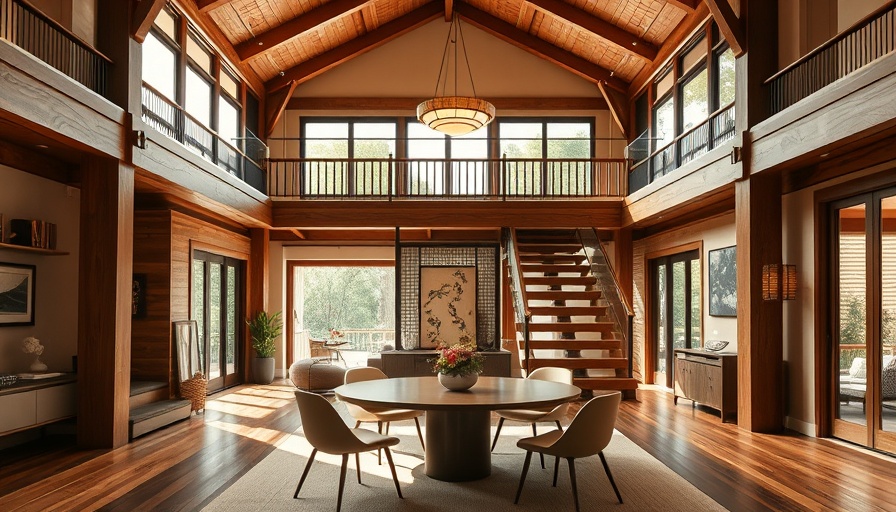
Reviving Tradition: A Beautiful Machiya Makeover
In Kyoto's Nishijin neighborhood, a century-old machiya has been transformed into a modern sanctuary by the acclaimed architect Kazuyo Sejima. This incredible renovation captures the essence of traditional Japanese architecture while seamlessly integrating contemporary elements. As evening falls, the home takes on a magical glow noted for its warm wooden façade, inviting passersby to peek into its beautifully curated interior.
Crafting a Modern Experience
In describing the transformation, resident Sam Brustad shares, "We’re trying to make machiya livable in the modern era." Cooking in the home has transitioned from an open firepit to a sleek stainless-steel island, demonstrating how traditions can bend to accommodate contemporary life. This renovation strikes a balance between embracing the past and welcoming the conveniences of modern technology.
The Heart of Japanese Craftsmanship
What sets this machiya apart are the details—such as the interior garden featuring a Nanten tree and artisan-made stone tower. Such features reflect the dedication to craftsmanship that has been a hallmark of Japanese design for centuries. Each corner of the home proudly showcases age-old artistry intertwined with modern functionality. A prime example is the dining area adorned with a stunning 19th-century folding screen, elegantly setting the stage for new memories.
Designing with Nature
The incorporation of nature into the home’s design serves dual purposes. Not only does it pay homage to Japan’s rich landscaping tradition, but it also promotes wellness—a core tenet of modern living. The open spaces and natural elements invite tranquility, fostering a harmonious living environment that respects both history and contemporary needs.
Inspiration for Future Renovations
The machiya renovation serves as a beacon for homeowners looking to modernize historical homes. By preserving important cultural influences while enhancing comfort and convenience, this project demonstrates that with thoughtful planning, it is possible to respect the past and elevate the future.
As we shift towards tech-imbued lifestyles, the integration of smart home technology within traditional frameworks could lead to exciting innovations in the housing market. The successful blend of historical charm and modern convenience could inspire further eco-friendly design principles in upcoming renovations.
In conclusion, Sejima’s reimagining of this Kyoto home is not just an architectural triumph but a reminder of how our living spaces can evolve. As we embrace change, taking cues from our history can lead to enriching experiences that connect us to our roots while pushing forward into the future.
 Add Row
Add Row  Add Element
Add Element 


 Add Row
Add Row  Add
Add 


Write A Comment